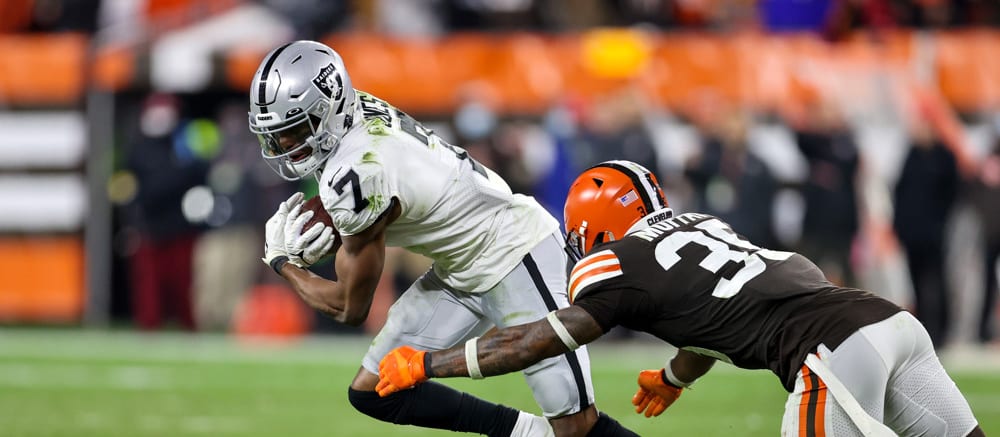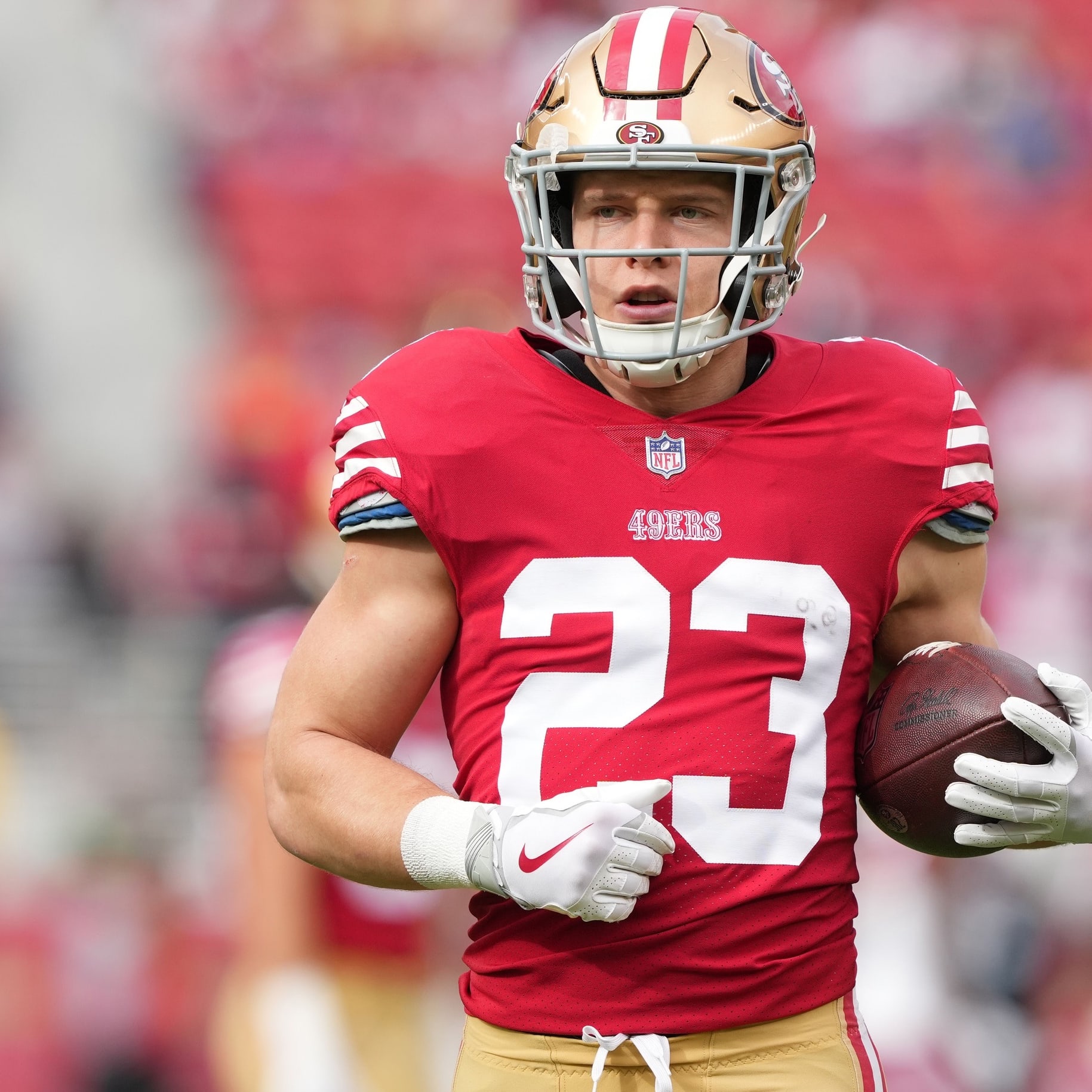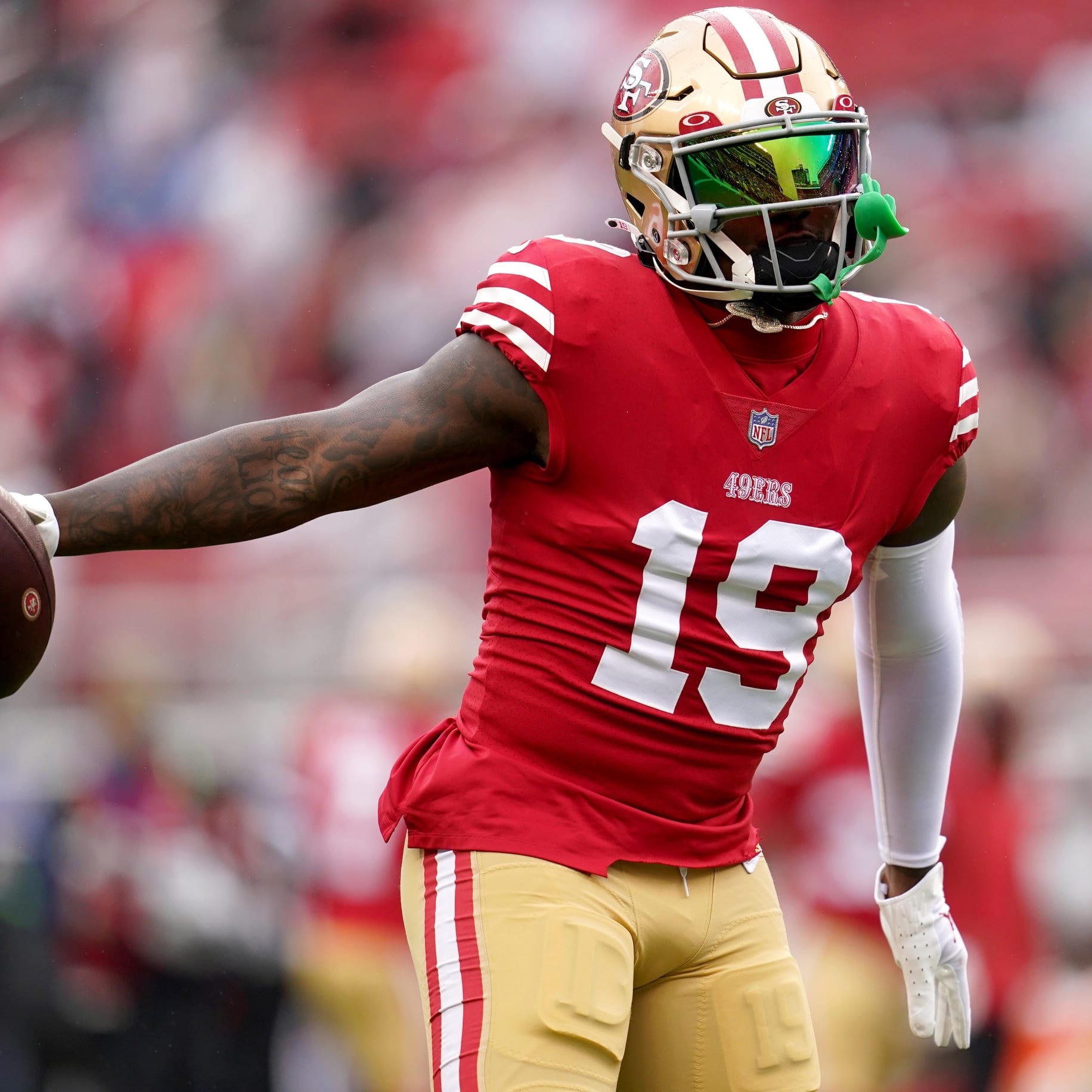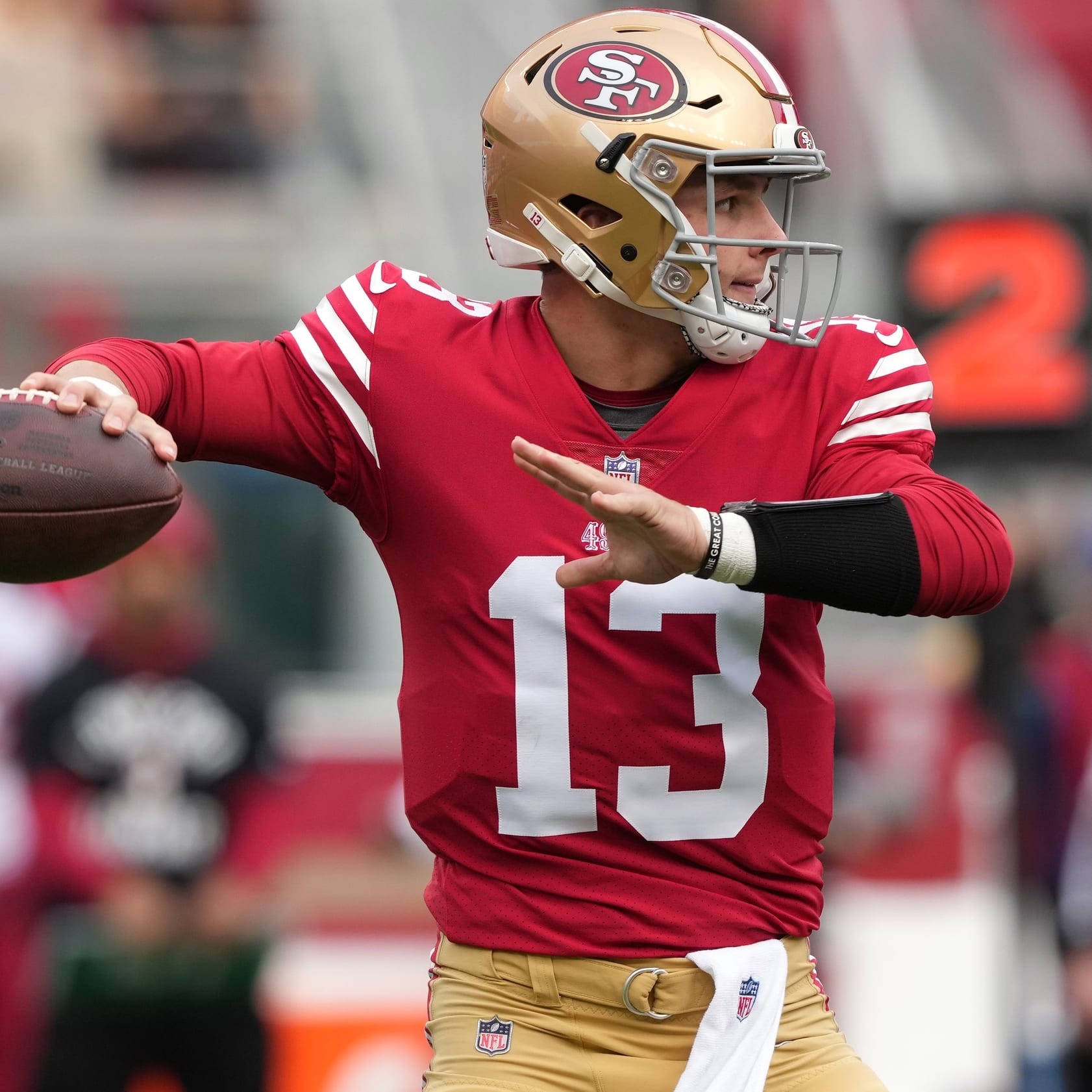This article is part of our Dynasty Strategy series.
Zay Jones' NFL career has been a disappointment. It's been five years since the Bills selected him in the second round of the 2017 draft, 37th overall, ahead of players like Curtis Samuel, Dalvin Cook, Alvin Kamara, Cooper Kupp, Chris Godwin and Kenny Golladay. Most of those five seasons were memorably bad, especially his three ill-fated seasons in Buffalo. Jones somehow accumulated just 90 receptions for 1,037 yards and nine touchdowns on 194 targets in that span -- a catch rate of just 46.4 percent at 5.4 yards per target. That's about as bad of a stretch as any wide receiver endured in league history. No matter what the background of an NFL wide receiver prospect, those numbers are bewildering. For a second-round pick with Jones' athleticism and history of production it's inconceivable.
The numbers are so bad it's almost as if something was amiss, some strange circumstance to maybe help explain the implausibly bad results he produced. Something was indeed askew, namely that Jones had off-the-field struggles that might have held him back early in his NFL career. He moved past those troubles and refocused himself with the Raiders, paying his dues as a backup in 2020 before securing a bigger role in 2021. It was a small sample and even in that sample Jones' playing time was subsidized by Henry Ruggs' unexpected departure, but as Jones' playing time increased his results only improved. By the end of the 2021 season a person might have even recognized glimpses of the East Carolina version of Jones, where he posted record-setting numbers and appeared destined for stardom.
The chances of Jones truly redeeming himself as a second-round pick are unlikely at this point, but his 2021 results were still strong enough that he needs his prospect profile reevaluated going forward. As an unrestricted free agent he could play an important role in the upcoming free agent wide receiver market.
Exciting news for sports enthusiasts in Massachusetts! Online sports betting will be launched in early March, giving residents the ability to easily place bets on their favorite sports using their mobile devices. One of the biggest perks of creating a new account is the opportunity to take advantage of welcome bonuses, which can greatly enhance your online betting experience.
If you're new to online sports betting, you'll be delighted to know that six different sportsbooks are offering a variety of Massachusetts sports betting promos, with thousands of dollars in welcome offers up for grabs.
BetMGM Massachusetts is offering a generous welcome bonus for new players who redeem the BetMGM Massachusetts bonus code. Previously, the bonus gave players $200 in bonus bets before the launch of online sports betting in Massachusetts, but now it provides players with a first bet offer worth up to $1,000!
But that's not all! Bettors in Massachusetts can also take advantage of the Caesars Sportsbook Massachusetts promo code to receive a first bet on Caesars worth up to $1,500. This is currently the best offer available for sports bettors in the Bay State, as Caesars Massachusetts is making a strong debut in New England.
INTEL
College Production
Jones was extremely productive at East Carolina, where he set the NCAA record for the most career receptions (399) and single-season receptions (158). Some of that production was due to a then-thriving East Carolina Air Raid offense, which generally pushed for 50 pass attempts in any given game, but Jones' production stood out even in a program with a few other productive players. Justin Hardy (the second-leading all-time reception leader) and Cam Worthy respectively led East Carolina with 1,494 and 1,016 yards in 2014, for instance, while Jones caught 81 passes for 830 yards. Jones was a true sophomore and about 19.5 at the time, while Hardy and Worthy were about 22.75 and 22.5, respectively. For Jones to get anywhere close to their level of production at more than three years younger is impressive, and his production only got better from there.
Jones' best work was of course his senior season, when he set the single-season reception record with 158 receptions for 1,746 yards and eight touchdowns on 226 targets. That's a catch rate of 70.0 percent at 7.7 yards per target in an offense that completed 64.8 percent of its passes at 7.2 yards per attempt. Not just that, but Jones outplayed the East Carolina baseline while producing an outrageous share of its volume. His yardage total made up 43.5 percent of the Pirates' passing yardage on 40.8 percent of the targets. When a player produces like that it can't just be chalked up to the system.
Athleticism
Jones faced a good amount of skepticism even after his remarkable collegiate career, and it's understandable enough why. Jones was a low recruit, even as the son of former first-round pick NFL linebacker Robert Jones and the brother of high Texas recruit Cayleb Jones. Scouts at then-BCS schools knew who he was because of his bloodlines but ignored him anyway. According to Rivals, Jones' only scholarship offers were from East Carolina and Arkansas State. He was almost entirely rejected by the FBS. Upon his combine showing, though, skepticism toward Jones all but evaporated and his status as a formerly unwanted recruit became that much more puzzling.
Checking in at 6-foot-2 (67th percentile according to Mockdraftable.com) and 201 pounds (48th percentile), Jones' size graded as more or less average. The numbers otherwise were well above average -- 4.45-second 40 (71st percentile), 36.5-inch vertical (64th), 133-inch broad jump (96th), 6.79-second three-cone drill (77th) and 4.01-second 20-yard shuttle (92nd). Most two-star wide receiver prospects are specifically held back by their athleticism, told they are too slow or too small to keep succeeding like they did in high school – but Jones proved he was specifically a five-star caliber of athlete.
NFL Production
Usually a player with Jones' athleticism and college production is a slam-dunk starter in the NFL. The exceptions are usually linked to unusual circumstances. Some players just fail for no reason, and Jones could very well be one such case, but to responsibly analyze Jones' failure in Buffalo a person needs to take into account his rookie year injuries and turbulent, very strange situation off the field.
In March of 2018, just a few months after the conclusion of his 2017 rookie season, Jones was arrested for felony vandalism but not charged after a frightening breakdown episode where he might have ended his own life if not for the intervention of his brother Cayleb. Zay was clearly in a bad place, and it doesn't get quite that bad overnight. There's a good chance Jones was trying to fight off some demons while he otherwise struggled in his rookie year. Jones also played an undetermined amount of his 2017 season with a torn shoulder labrum and a knee issue, both of which required surgery following his rookie year.
Just as Jones' breakdown incident couldn't have been an overnight development, it's just as true that a player can't produce like Jones did in 2021 if dealing with those same struggles. He's clearly turned a corner and become himself again. Perhaps he'll never be what was hoped for following his East Carolina career, but he can still prove a meaningful NFL contributor.
When you look at Jones' 2021 box score it's easy to read right past it without much thought. It's not noteworthy when a player catches 47 receptions for 546 yards and one touchdown on 70 targets, especially when they're in their fifth NFL season. Upon a closer inspection, though, you can separate the season into three different subsections with Jones, and the results differed depending on the phase. He began the year as a backup who was rarely involved in the passing game during the few snaps he played behind Ruggs, Hunter Renfrow and Bryan Edwards. Jones caught just six passes for 115 yards and one touchdown on seven targets in those seven games. He seemed destined to ride out the season and indeed the rest of his career as a peripheral contributor seen on special teams as often as offense. Then Ruggs was gone.
Jones' playing time spiked in the three games following the bye, logging 141 snaps. The production did not yet follow even then, though, as the Raiders mostly plugged in Jones as the by-default deep route replacement in light of Ruggs' absence. Jones' 4.45 speed made him the only candidate for those downfield routes since Renfrow and Edwards aren't very fast, but downfield routes were never a strength for Jones. Playing in this role basically reduced Jones to a decoy, and he caught just three passes for 62 yards on eight targets in those games. Then DeSean Jackson became available, and with his arrival the Raiders moved Jones from the deep-route specialist role to one with a more underneath and intermediate-level average depth of target. With that change, Jones' breakout finally commenced.
In the next eight weeks Jones played 432 snaps, drawing 62 targets and catching 43 receptions for 430 yards and a touchdown. Those numbers are far from flashy, but his catch rate of 69.4 percent at 7.0 yards per target was actually slightly above Derek Carr's passing baseline in the sample (66.3 percent completed at 6.8 YPT). Carr was struggling in that stretch due to Darren Waller's absence and some difficulties on the offensive line, but Jones outplayed Carr's marks for both completion percentage and yards per attempt, producing 21.2 percent of their receptions and 20.7 percent of their receiving yardage on a 20.3-percent target share. If Carr were playing as well as he has for most of the last three years, then Jones' numbers might have looked better, too.
2022 PROJECTION
The Raiders offense lost something with Ruggs' arrest, and none of the in-house options can imitate his downfield utility. That includes Jones, who only broke out in 2021 once moved into an underneath/intermediate route depth late in the year. If the Raiders re-sign Jones then he won't reliably project for standout usage because he would again run the risk of being the by-default deep decoy just for the fact that Renfrow and Edwards can't threaten vertically. For this reason it might be best for Jones' fantasy prospects if he walks in free agency to another team that can safely offer him 750-plus snaps in an underneath/intermediate role.
Then again, the hiring of Josh McDaniels might present an exception to that. Most offenses need a vertical decoy element and Jones would likely get stuck with it for most offensive schemes, but McDaniels' offense is so oriented to the underneath and horizontal that there might somehow be room for all of Jones, Renfrow, Edwards and Waller to coexist within 12 yards of the line of scrimmage, especially when you factor in McDaniels' uptempo tendencies. Perhaps Jones can't push for a big target share in this scenario, but running more plays per game can help offset that.
Jones in any case is a better player than he showed in Buffalo, and it will be interesting to see how convinced the NFL might be by his comeback tour. There's reason to think he could thrive as an underneath WR2/WR3 in an offense with an accurate passer, and there's a chance the Raiders could meet that definition. Jones will likely be affordable if not cheap in free agency, so a team that signs him could still justify spending an early draft pick on another wide receiver, but if Jones secures 800 snaps or more he could push for top-50 fantasy receiver utility in PPR.












